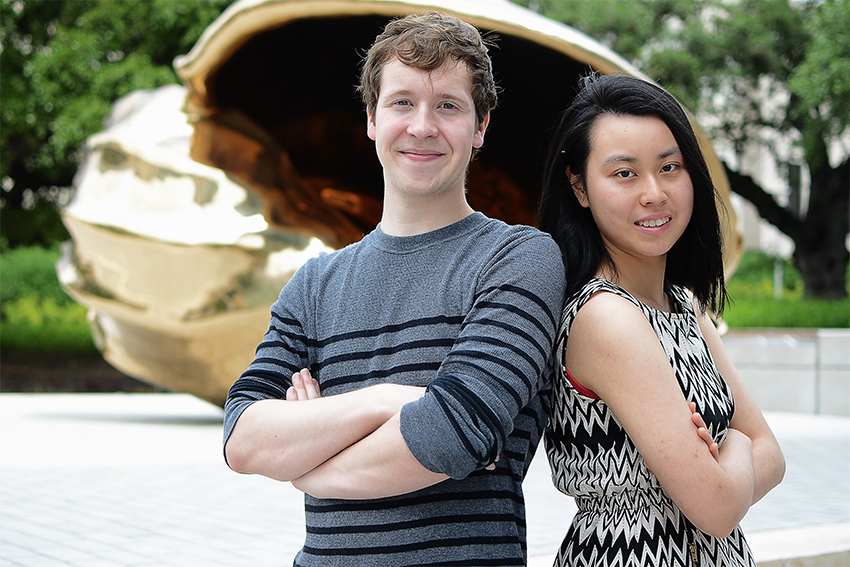Art often demands the senses of sight and sometimes touch and smell, but, during Sound in Sculpture audiences will be invited to experience art through sound.
Texas Performing Arts has partnered with Landmarks, UT’s public art program, the college of fine arts and the school of music to showcase students’ musical compositions inspired by public art around campus. On Thursday at 6:30 p.m., the public will get the chance to hear these works during the third annual Sound in Sculpture concert, which will take place at and focus on art pieces around the Health Learning Building of the Dell Medical School.
“We are used to listening to music in a concert hall, (and) to viewing art in a certain setting,” said Tim Rogers, Student Engagement Coordinator for Texas Performing Arts. “We thought we could gain something by having the music performed right next to the work of art.”
The event, Rogers said, will be structured so the artists will be located next to the art. Guests will be asked to move from one piece to the next to hear compositions.
“It is lots of different takes on the music,” Rogers said. “Even if you are looking at the same thing, everyone has a different perspective on what that might inspire.”
Musical composition sophomore Jessica Eubanks said she decided to create a piece for concert after being inspired by the art piece One Everyone by Ann Hamilton. She said she felt compelled by the way the photographs portray touch while the images themselves are art that can be only be seen and not touched.
Eubanks said she had to come up with a set of themes the piece represents for her, such as a collective unity, touch and physical care.
“It is sort of a musical metaphor for the way that we are different,” Eubanks said. “Each instrument uses itself to show how people are different, but we also come together and play at the same time.”
For music composition senior Ben Stevenson and graduate composition student Grace Ma, the magnitude of the Spiral of the Galaxy piece by Marc Quinn and its relationship with the original shell became the inspiration for their works. Stevenson said for one of his pieces, he channeled the delicate sound of the ocean the original shell could provide.
“It brings back the nostalgia of being at the beach and how you can kind of take this immense, unmanageable ocean and bringing it to this small form,” Stevenson said.
In an effort to integrate her childhood love for science and mathematics with her passion for music composition, Ma based her composition on a triangular number sequence she created. Her piece, titled Quintuple Helix, draws upon a DNA relationship between the metal shell and the real one.
“I am also very inspired by (how) he 3D printed from an actual conch shell,” Ma said. “That is something you can hold in your palm, and now it is this huge bronze thing that is sitting in the middle of the urban landscape, being very much part of it rather than something you can pick off the beach, handle in your palm.”
When Stevenson found out others were also using the Spiral of the Galaxy, he said he planned to pick another piece to maintain variety but said later thought it was more important to reflect the different views each of them had about the same work.
“It is really interesting how we have all presented a completely different perspective on this one piece of art,” Stevenson said. “That is the purpose of the Landmarks project — to have people interpret the art in new and different ways.”















